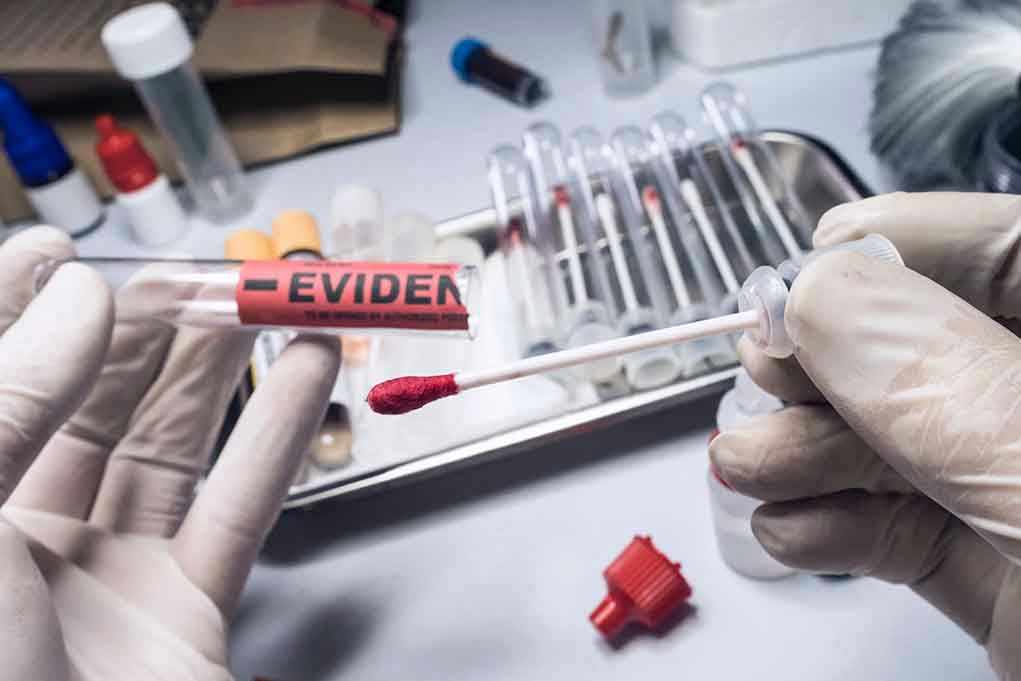
More than sixty years after a brutal murder shattered an Albany family, the silent power of DNA finally spoke—solving a cold case that haunted generations and proving that the dead can, indeed, answer for their crimes.
Story Snapshot
- DNA evidence linked a long-dead perpetrator to the 1964 murder of Catherine Blackburn, closing one of New York’s oldest cold cases.
- The case remained unsolved for over six decades, leaving a family and community without closure.
- Relentless advocacy from Catherine’s niece, Sandy Carmichael, was instrumental in pushing authorities to keep searching for answers.
- Posthumous identification of Joseph Nowakowski as the killer highlights both the triumphs and limits of modern forensic science.
DNA: The Ghost Hunter in America’s Oldest Crime Scenes
September 1964, Albany, New York: Catherine Blackburn, age fifty, was raped, stabbed, and bludgeoned to death in her own home. For more than half a century, her family—especially her niece, Sandy Carmichael—lived with the raw memory of both the crime and the gnawing absence of justice. Decades passed, suspects faded, and evidence gathered dust as technology lagged behind the evil that visited Catherine’s apartment. The killer, Joseph Nowakowski, would die in obscurity in 1998, never questioned for her murder. Yet, the story did not end there.
Brutal 1964 cold-case slaying of beloved NY aunt finally solved thanks to DNA: ‘We’ve prayed for this day’ https://t.co/dxw8KU8Lo6 pic.twitter.com/sD53djhv91
— New York Post (@nypost) October 8, 2025
In the 2020s, forensic science made a quantum leap. Cold case units, armed with DNA technology and a new doggedness, revisited files like Catherine’s. Investigators at the Albany Police Department, working alongside the Criminal Investigation Resource Center at Russell Sage College, exhumed Nowakowski’s remains. Scientists compared DNA from the crime scene to genetic material from the exhumed body. The match was, to use law enforcement’s words, “thorough and certain.” The ghost of Nowakowski had finally been unmasked.
The Relentless Niece and the Anatomy of a Cold Case
Sandy Carmichael was just a young woman when she discovered her aunt’s body. That trauma never left her, nor did her resolve. For over sixty years, Sandy pushed authorities, haunted newsrooms, and kept Catherine Blackburn’s name alive in a world eager to forget old wounds. Her advocacy, combined with the persistence of dedicated detectives, became the driving force that kept the case from vanishing into the archive of unsolved American tragedies. In October 2025, when police announced the case was solved, Sandy’s voice cracked with relief: “We’ve prayed for this day.”
Nowakowski, the perpetrator, had a criminal history—burglaries, an assault on an elderly woman in 1973—but was never linked to Catherine’s murder while alive. The case illustrates the limitations of 1960s forensics: blood typing, rudimentary fingerprints, and precious little else. Only with 21st-century DNA analysis and the willingness to exhume the dead could the truth finally emerge. The result was a resolution, but not justice in the classical sense. The killer could not stand trial; he could not face punishment. For the Blackburn family, closure came as a verdict for history, not the courts.
Forensic Science as Justice’s Final Arbiter
Cold cases like Blackburn’s are grave reminders that justice delayed is often justice denied. Yet, they also reveal the transformative promise of science when harnessed with resolve. The collaboration between the Albany Police Department and academic forensic experts at Russell Sage College set a high bar for thoroughness. Law enforcement insisted on exhaustive verification, aware of the stakes in publicly naming a perpetrator posthumously. This union of science and common sense—waiting for certainty, not speculation—demonstrates that while American justice is imperfect, it is not powerless in the face of time.
The case’s impact radiates outward: renewed hope for families of other unsolved crimes, proof that persistence can yield answers even decades later, and a challenge to the justice system to keep investing in cold case units. Academics and professionals have pointed to this case as a model, arguing that the fusion of police work and cutting-edge forensic analysis is essential for future breakthroughs. Yet, the case also exposes the inherent limits of scientific justice: DNA can reveal the truth, but it cannot summon the dead to answer for their sins.
Legacy of a Murder Solved—And the Weight of Unfinished Justice
With the case closed, the Blackburn family and the Albany community gained the one thing they had been denied for sixty years: the truth. The ripples extend far beyond one family. Politically, the resolution may drive further funding for cold case work and forensic research—an investment in the idea that no victim should be forgotten. Socially, it reinforces faith in both science and the perseverance of families who refuse to let the past fade. For Nowakowski’s family, who cooperated with the exhumation, the answer is bittersweet—closure, but at a cost.
The Catherine Blackburn case is a testament to American determination: that with enough time, enough science, and enough stubborn hope, even the coldest cases can be thawed. The lesson for every reader? The past is never as silent as it seems. Sometimes, it just takes the right question—and the right technology—to make it speak.
Sources:
1964 cold case solved in New York with DNA evidence, authorities say – ABC News
Brutal 1964 cold-case slaying of beloved NY aunt finally solved thanks to DNA – NY Post













